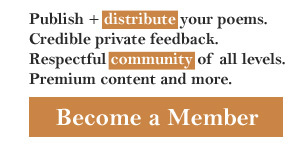This is an analysis of the poem Keep It Real And Often Stimulated that begins with:
You want to keep it real and often stimulated.
No need to keep it on the downlow and degraded....
Elements of the verse: questions and answers
The information we provided is prepared by means of a special computer program. Use the criteria sheet to understand greatest poems or improve your poetry analysis essay.
- Rhyme scheme: AAABA AAABA ACACACBA Xaa DEA ACccXDEA
- Stanza lengths (in strings): 5,5,8,3,3,8,
- Closest metre: trochaic pentameter
- Сlosest rhyme: rondeau rhyme
- Сlosest stanza type: tercets
- Guessed form: unknown form
- Metre: 1101011101010 1101010101010 1101011011010 111101011101 11 1101011101010 1101010101010 1101011011010 111101011101 11 1101011101010 11 1101010101010 11 1101011011010 01 111101011101 11 101011101011 01110101 1010101 10101001001 0111011101 00101010001001 1101011011010 01 01001 101001 10101001001 0111011101 00101010001001
- Amount of stanzas: 7
- Average number of symbols per stanza: 166
- Average number of words per stanza: 29
- Amount of lines: 31
- Average number of symbols per line: 37 (medium-length strings)
- Average number of words per line: 7
Mood of the speaker:
The punctuation marks are various. Neither mark predominates.
The author used lexical repetitions to emphasize a significant image; you, to, and, with, love are repeated.
The author used the same words you, keeping at the beginnings of some neighboring stanzas. The figure of speech is a kind of anaphora.
There is a poetic device epiphora at the end of some neighboring lines love is repeated).
The poet repeated the same word made at the end of some neighboring stanzas. The poetic device is a kind of epiphora.
If you write a school or university poetry essay, you should Include in your explanation of the poem:
- summary of Keep It Real And Often Stimulated;
- central theme;
- idea of the verse;
- history of its creation;
- critical appreciation.
Good luck in your poetry interpretation practice!
Pay attention: the program cannot take into account all the numerous nuances of poetic technique while analyzing. We make no warranties of any kind, express or implied, about the completeness, accuracy, reliability and suitability with respect to the information.
More information about poems by Lawrence S. Pertillar
- Analysis of What God Delivers To You Is Yours To Keep
- Analysis of In Their Birthday Suits
- Analysis of Exclusive Booty

